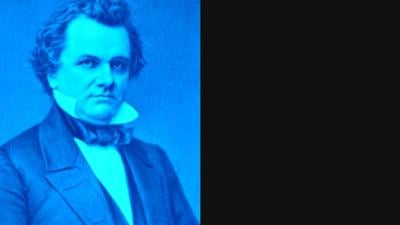SPRINGFIELD, Ill. (WAND) - Among protests and demands for racial justice, there is also a call to remove historical figures.
There are individuals who some would say made an impact on the country, but they are also seen as offensive to people of color. Reports show monuments of Robert E. Lee, Christopher Columbus and Stonewall Jackson were taken down. In Illinois, the latest controversial person is Stephen A. Douglas.
In Chicago, park district officials unanimously voted to change Stephen Douglas Park to Frederick Douglass Park. Frederick was an American abolitionist and former slave. In Springfield, there are plans already in motion to remove Douglas from state capitol grounds.
Like any other historical monument, the news of its removal garnered hundreds of reactions on social media.
Historians would say Douglas was one of the most popular politicians in Illinois and a leading figure in the Democratic party. The former Senator's influence rivaled presidents.
To understand Douglas, WAND News talked to two professors: Dr. David Zarefsky from Northwestern University and Dr. Graham Peck from the University of Illinois Springfield.
Douglas' tenure as a Senator was all about expanding the nation and not so much slavery. Dr. Peck said Douglas believed the United States back then was spreading freedom.
"Any land that was annexed, (taken) or purchased, we were spreading freedom," Peck said.
Dr. Zarefsky said slavery was in the way of expanding the nation and he did what he could to minimize its significance. The Northwestern professor said Douglas was against slavery, but Peck added he was against slavery in Illinois. Douglas was willing to accept slavery in other states. His views on slavery were described as neutral. The former Senator would rather have the people choose how to approach slavery or popular sovereignty.
According to Dr. Peck, Lincoln said it was a perverted version of popular sovereignty. To Lincoln, "true popular sovereignty means that a man can do what he wishes with himself, but not with other men against their will."
When asked what were Douglas' views towards Black people, Dr. Peck said Douglas talked about race a lot and described it as "very ugly". Dr. Zarefsky frankly called him a white supremacist.
"He's [Douglas] thought of nothing but stirring up race prejudice," Zarefsky said. "He campaigned against Black rights. He accused Lincoln of favoring Black equality, which Lincoln didn't."
As stated by Dr. Peck,"race was the place that provide him [Douglas] space to defend his political position in the North."
Both historians pointed out if a person was against slavery, it didn't necessarily mean they were an abolitionist or anywhere near today's moral standards. Peck and Zarefsky candidly describe him as a racist. Dr. Peck mentioned the time the 'Little Giant' brought up race in a debate with Lincoln, he told voters the Declaration of Independence referred to white men.
"So he goes on record saying 'this country is made by white men, for the benefit of White men and should forever be ran by white men.'" Dr. Peck quoted.
However, Peck said Douglas' views on race were not simple. After losing a race to become the Democratic presidential nominee, Peck said Douglas tried to keep the Union from falling apart by appealing to southern Democrats.
"Had the Union not been breaking up would he not be saying these highly racist things? I doubt that," Peck said.
When the Confederates fired on Fort Sumter, Douglas rallied the northern Democrats to support the president. However, he died during the opening months of the Civil War. WAND's Tristan Hardy asked the two historians how Douglas should now be remembered.
"I think people should remember him preeminently a man of his time who had the misfortune to hold on to some beliefs, just as the time was passing him by and rendering those beliefs obsolete," Dr. Zarefsky said.
"I guess I would say I would like it to be an informed understanding," Dr. Peck said. "I would say is that he was very deeply racist. In a society where - understand - the vast majority of people, by our standard, were."
It should be known there is also a statue of Douglas inside the Illinois State Capitol. That statue could be removed for study. Once the other statue of him outside is removed, it is possible a statue of Dr. Martin Luther King Jr. would replace Douglas.











